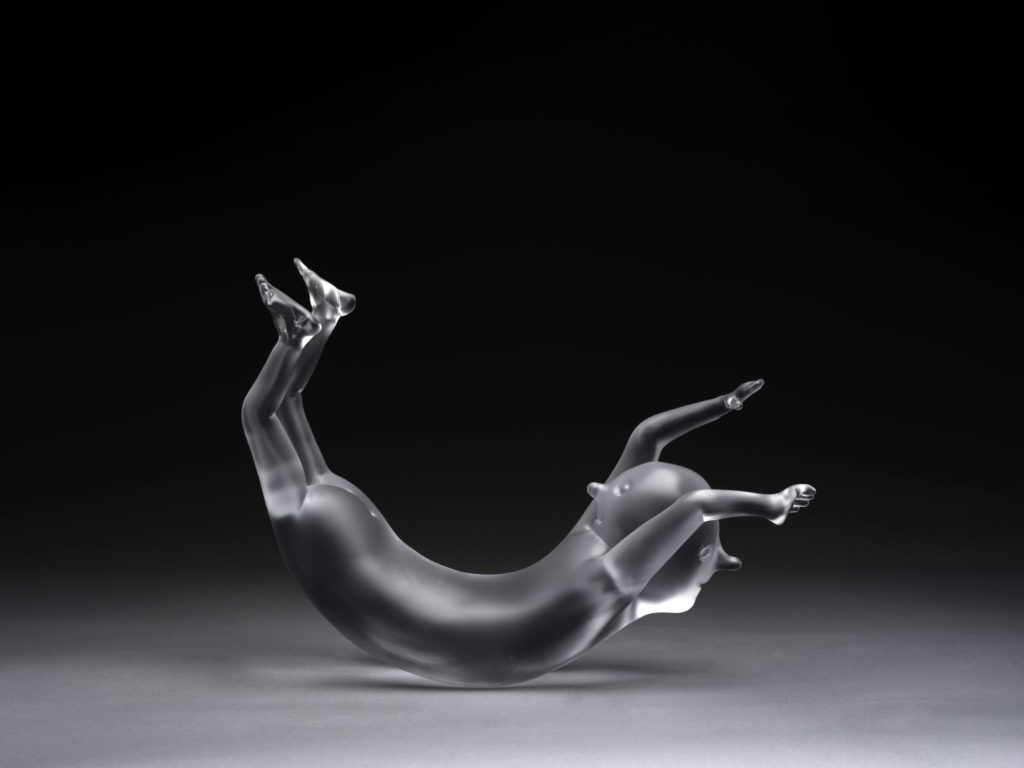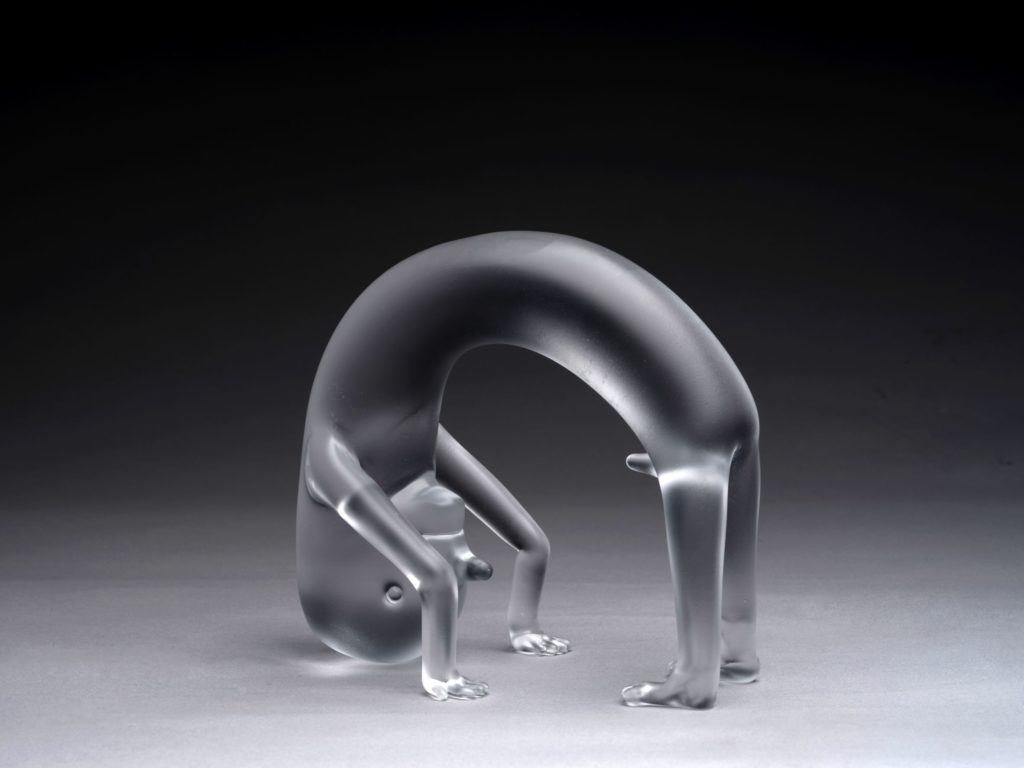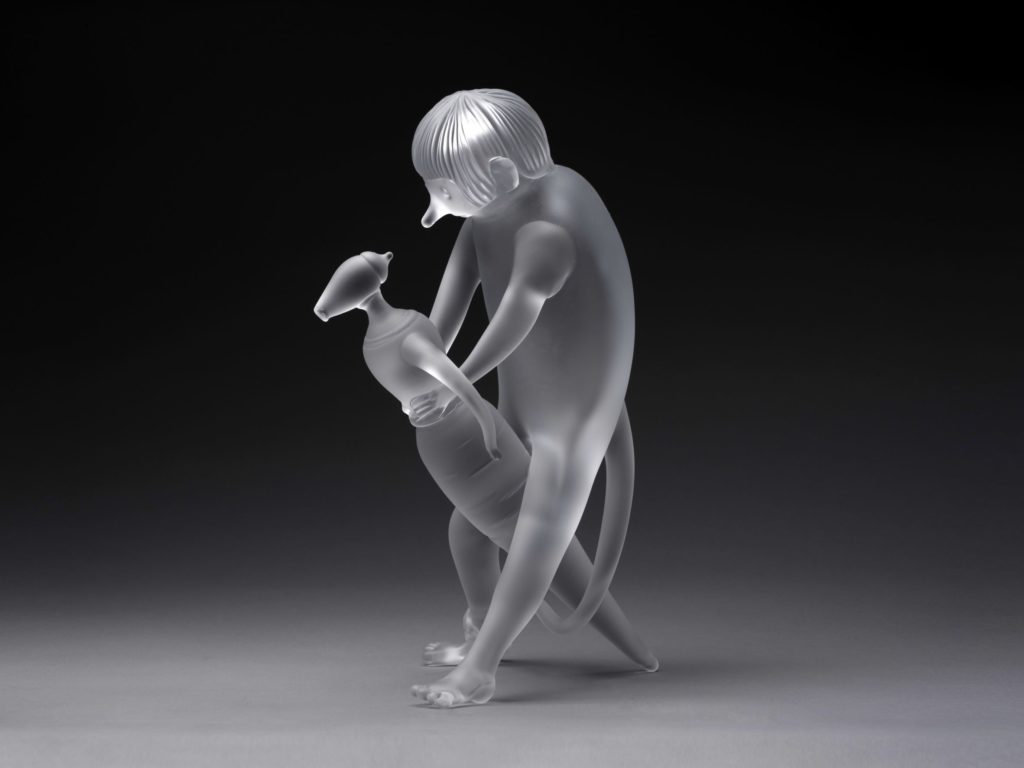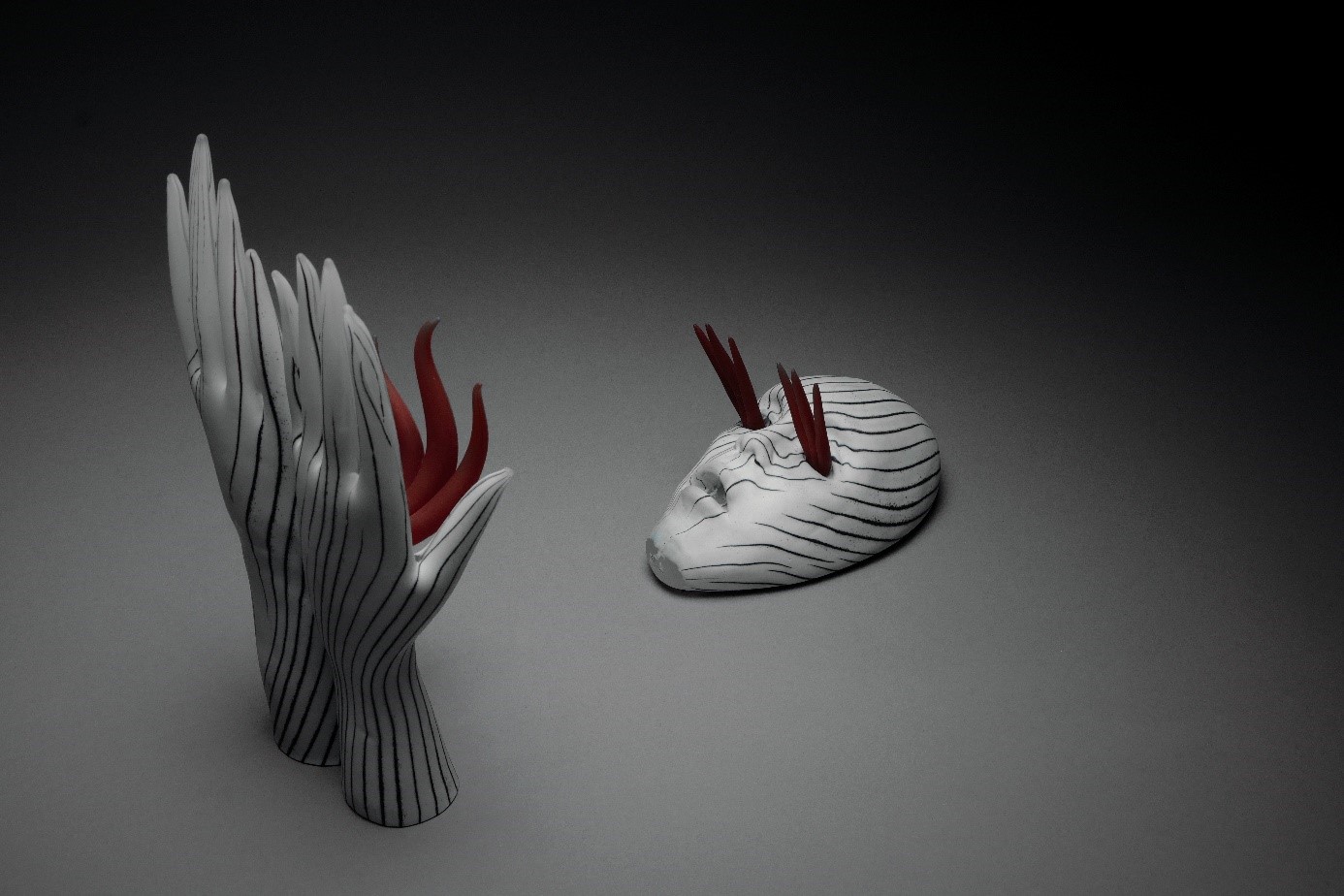10/02/2022 – 15/04/2022

Euforik, 2022, Hand scupted glass, 18 x 23 cm, Photo © Robin Malátek
As far back as the 1960s, collaborations between the Murano glass masters and the contemporary icons of global modern art, such as Pablo Picasso, Max Ernst and Alexander Calder (the results of which form part of the Peggy Guggenheim Collection of modern art in Venice), demonstrated the mutual pull exerted by both these artistic movements. Artists that prioritise an ongoing sense of experimentation often find themselves drawn to the field of glass. Meanwhile, glass masters (often themselves practicing artists), facing the additional challenge of learning the complex intricacies of forming glass, are typically more than happy to join forces and take up such a challenge. Aside from cultivating crucial mutual ties, these relationships can also yield much of note. One such relationship has formed between Czech artist František Skála and his counterpart, glass artist Martin Janecký. The results of this long-running collaboration were first presented to the public during the 14th annual International Glass Symposium held in the town of Nový Bor at the end of September 2021. And now, in early 2022, Galerie Kuzebauch is presenting a select and entirely unique series of artworks from the Skála and Janecký collaborative team.

Samozpyt, 2022, Hand scupted glass, 15 x 16 cm, Photo © Robin Malátek
František Skála has left the realisation of his mini-stories concerning strange, genetically modified figures (or entities) to Martin Janecký, a man who has successfully mastered the technology behind of hand shape glass. Skála, meanwhile, supplied the basic ideas in the form of drawings, also offering artistic correction input during the entire production process.
From a wider perspective, Skála’s collaboration in this regard offers a satisfying outlet for the artist’s ability to perform a kind of “archaeological probing” of various materials, thus unveiling their inherent artistic properties, via the use of his painting, sculpting and installation-creating abilities. Skála is particularly interested in those materials for which such inherent potential may not be immediately obvious. Typically these are natural materials, such as coloured soil, branches, seashells, gastropod shells and the like. And now, glass has been added to the list, albeit of very different parameters. Skála’s works bear little resemblance to the predominant post-1945 trend in Czech glass art. After all, the main thrust of Skála’s modus operandi has been to toss out the existing rulebooks and simply focus on the pleasure of creation! Indeed, the fact that such works risk being excluded from the central currents of the contemporary Czech glass art movement is something Skála simply brushes off. Originality, out-of-the-box thinking, even a touch of eccentricity – such facets form the very DNA of František Skála the artist.

Dancing Face to Face, 2022, Hand scupted glass, 35 x 20 cm, Photo © Robin Malátek
František Skála created hundreds of small drawings during the creation of the final glass art works. These have inspired the title of the exhibition itself, Kaleidoscope (Kaleidoskop). Typically, this word is associated with the multicoloured imagine-splitting viewfinder; but in this case, the word is used symbolically, and points to a multitude of created (and potential) artistic variants. Dozens of sketches featuring “mutated” situations and stories reflect their author’s vast talent, vision, sense of fantasy, and even the sophistication of their respective potentially paradoxical meanings. Only once the drawings are complete is the final design selected. The author considers these as a kind of superstructure template for fellow artist Martin Janecký to then adapt, via his glass hand-blowing skills, into the finished product.
The resulting individual sculptures reflect a kind of situational capturing of the adventure-filled escapades of grotesque-looking figures – almost mutant beings – who did not emerge by chance or by some automatic path, but rather came about via their creator’s modifying them into intelligent beings. Glass is melted in a furnace and worked according to František Skála’s designs. The resulting art object is then cooled and subsequently matted. This is done in order to make the interior of the sculpture matted, so as to guide the viewer’s eye purely towards the intricacies of the presented story. Another reason is to eliminate all peripheral distractions, namely glass reflections and sheen. As a result, the properties of the utilised material are directly subordinate to the desired narrative – to the intentions of the great storyteller himself, František Skála. Even in his glass art works, Skála’s unique message shines through. It is one that urges a path towards global sustainability via the finding of a healthy balance between output, monetary gain and existence. In the artist’s own words: “Fantasy and the maintaining of one’s ‘scientific’ faith in things intangible and unseen are the only defences and antibodies against an otherwise pragmatic world”[1].
Sylva Petrová
Exhibition curator
[1] Skála-František – Prokůpek Tomáš, Před Vlasem a Bradou, s.7. Skála František, Velká kniha Vlase a Brady. Private edition, Prague 2021.

